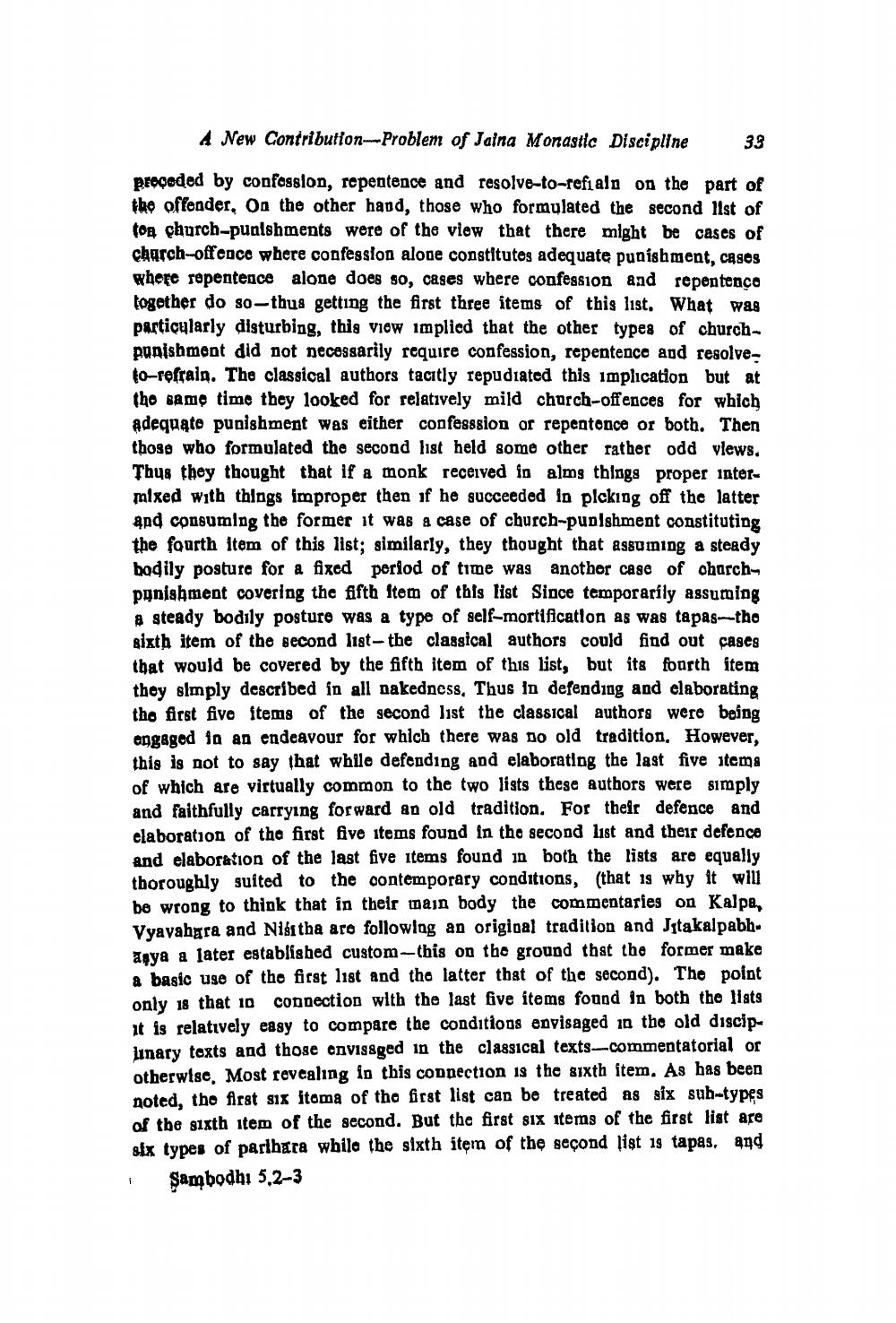________________
A New Contribution-Problem of Jaina Monastic Discipline
33
preceded by confession, repentence and resolve-to-refiain on the part of the offender. On the other hand, those who formulated the second 11st of ton church-punishments were of the view that there might be cases of church-offence where confession alone constitutes adequate punishment, cases where repentence alone does so, cases where confession and repentence together do so-thus getting the first three items of this list. What was particularly disturbing, this view implied that the other types of churchpunishment did not necessarily require confession, repentence and resolveto-refrain. The classical authors tacitly repudiated this implication but at the same time they looked for relatively mild church-offences for which adequate punishment was either confesssion or repentence or both. Then those who formulated the second list held some other rather odd views. Thus they thought that if a monk received in alms things proper intermixed with things improper then if he succeeded in picking off the latter and consuming the former it was a case of church-punishment constituting the fourth item of this list; similarly, they thought that assuming a steady bodily posture for a fixed period of time was another case of churchpunishment covering the fifth item of this list Since temporarily assuming a steady bodily posture was a type of self-mortification as was tapas-the sixth item of the second list-the classical authors could find out cases that would be covered by the fifth item of this list, but its fourth item they simply described in all nakedness. Thus in defending and elaborating the first five items of the second list the classical authors were being engaged in an endeavour for which there was no old tradition. However, this is not to say that while defending and elaborating the last five items of which are virtually common to the two lists these authors were simply and faithfully carrying forward an old tradition. For their defence and elaboration of the first five items found in the second list and their defence and elaboration of the last five items found in both the lists are equally thoroughly suited to the contemporary conditions, (that is why it will be wrong to think that in their main body the commentaries on Kalpa, Vyavahara and Nikitha are following an original tradition and Jitakalpabh. anya a later established custom-this on the ground that the former make a basic use of the first list and the latter that of the second). The point only 18 that in connection with the last five items found in both the lists it is relatively easy to compare the conditions envisaged in the old disciplinary texts and those envisaged in the classical texts-commentatorial or otherwise, Most revealing in this connection is the sixth item. As has been noted, the first six itema of the first list can be treated as six sub-types of the sixth item of the second. But the first six items of the first list are six types of parihara while the sixth item of the second list 1s tapas, and
Sambodhi 5,2-3
1




